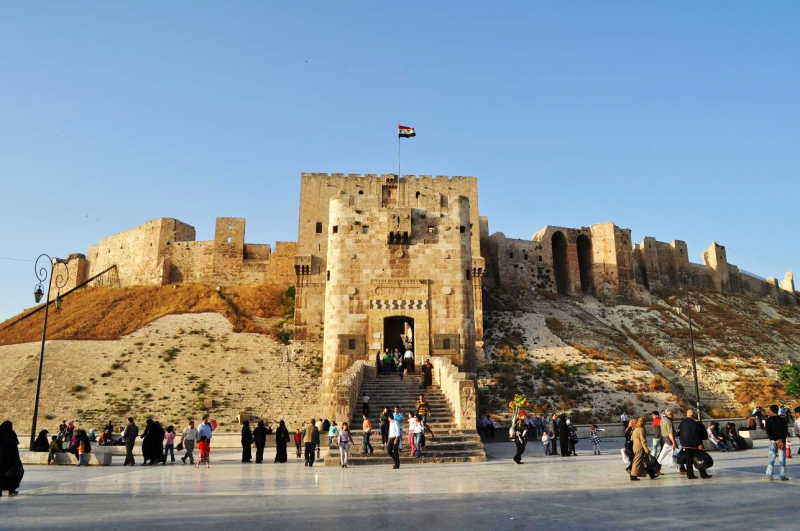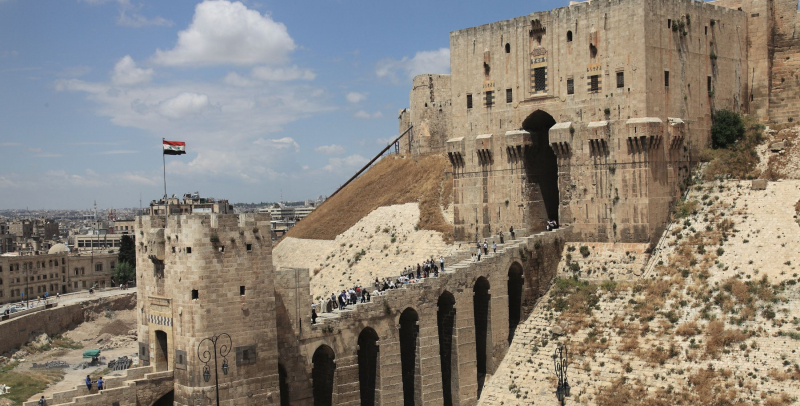The Citadel of Aleppo
In the heart of Aleppo's historic city in northern Syria, the Citadel of Aleppo is a sizable medieval walled palace. It is regarded as one of the world's largest and oldest castles. The Ancient City of Aleppo, which dominates the city, has been a UNESCO World Heritage Site since 1986. The protracted Battle of Aleppo in the 2010s caused serious damage to the Citadel. Early in 2018, it reopened to the public after undergoing repairs on the broken components.
The citadel contains a lot of structural ruins. Sultan Ghazi built a massive stone bridge over the moat that led to an impressive curved entry complex. There were machicolations for dumping boiling liquids on invaders from the mezzanine above the entry ramp, which was six twists up a vaulted ramp to the castle. The structure is filled with hidden tunnels, and the major corridors are adorned with figurative reliefs.
There are homes, supply storage areas, wells, mosques, and defensive structures inside the citadel's walls - everything needed to withstand a protracted siege. The enormous entry block, which was constructed in 1213, is the area of the complex that is the most imposing. Two imposing gates - the Gate of the Serpents and the Gate of the Lions - can be reached through a high stone bridge supported by seven arches that spans the moat, which is now dry. Defenders would have thrown boiling liquids down on attackers and showered down arrows from multiple arrow slits above in order to prevent them from entering the citadel. Invaders would have also had to pass through both gates and travel a meandering route.
Location: Aleppo, Syria









